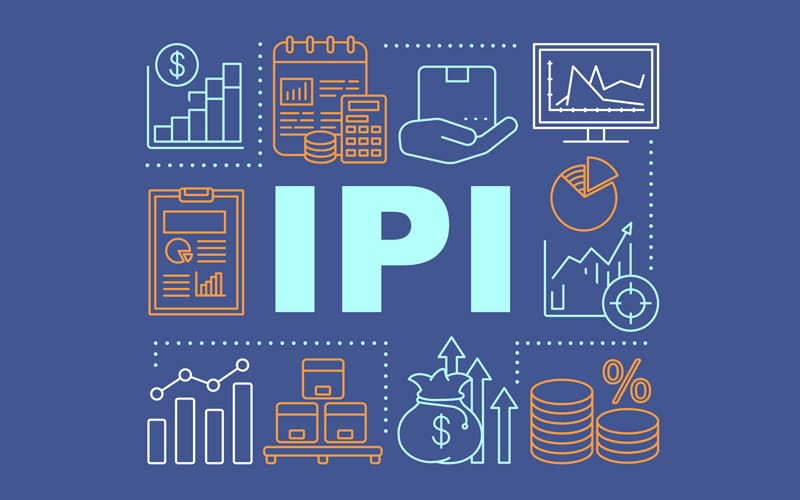Forex traders need to closely monitor all the economic indicators because these affect the economy and thus influence the price of currencies. The Forex market deals with trillions of dollars on a daily basis and seasoned traders keep a close eye on economic indicators like the Industrial Production Index in order to stay one step ahead of their competition. Here, we shall talk about:
- The IPI
- How you can calculate it
- Its ramifications on the Forex market
- Other related topics
What Is Industrial Production Index?
The Industrial Production Index evaluates the total output of a nation that comes from the various core industrial sectors. Experts often view this as an indication of growing job prospects in key economic areas. A solid customer base is created as a result, and expenditure on goods and services rises drastically.
While the GDP indicator represents the expenditures made by consumers and industries for purchases, the IPI focuses on the production on the basis of what was paid to the creators of finished goods.
Every country has different versions of the IPI that assess the industrial outputs of the respective nations. While countries like the UK and the USA release their IPI data on a monthly basis, others like Australia release the data once every quarter.
The industrial production numbers also encompass newspaper and book publishing since they are traditionally a part of the manufacturing territory. More often than not, the yearly alterations in the industrial production are represented as a rate percent, showing the net divergence in manufacturing revenue delivered year-over-year.
How is it calculated?
The IPI is always computed with respect to a base year, e.g., 2013. Hence, the IPI proportions don’t depict the net production amount, rather representing the percentage change in industrial production with respect to the year 2013.
When it comes to the source data, it takes into account a wide range of things, including physical revenue like the total amount of steel produced, sales numbers adjusted for inflation, and even the working hours as declared by factory employees. The Federal Reserve Board collects these particulars from the various industrial and bureaucratic bodies, aggregating them into a single index with the help of a formula.
Inside the net Industrial Production Index, there exist a small number of financial securities that provide us with a thorough insight into industries concerned with the manufacturing of extremely specialized goods. There are many sectors where the monthly output information is made public, such as paper, recording apparatus, iron commodities, commodities utilizing springs and wires, rug mills and carpets, ice creams, and domestic gas.
What is Capacity Utilization?
Capacity utilization is one more vital data set that is connected to a country’s industrial revenue. It tells us about the production and manufacturing capabilities that are used by an organization or a nation at a certain point in time. It shows the correlation between the production occurring with the existing resources and the prospective amount of production that could be achieved if the nation fully utilized its capacity.
Some experts also define capacity utilization as a yardstick that computes the speed at which a country is meeting or using its potential output levels. This is represented as a percentage and tells us how much the resources are being utilized and how an organization can grow its output without spending more money on producing goods. Another term for the capacity utilization rate is operating rate, and the formula for this is shown in the figure below.

Let us try to understand this concept through an example. Suppose your team’s potential output is 24 hours per day. But, after doing some digging, you got to know that only 20 hours were spent by your team working last day. Therefore, the capacity utilization rate of your team for yesterday was 20/24 x 100 = 83.33%.
In this regard, you can also calculate the utilization rate of each employee to see if certain members are performing better or worse with respect to others. Usually, this metric needs to be tracked over a long time period so that the performance is not judged solely based on a single week or day. Although 100% is the ideal capacity utilization rate, it is unrealistic to aim for this figure, and on top of that, it will decrease the overall quality of work.
IPI Analysis
The IPI serves as a crucial macro-economic indicator for financial experts and merchants alike who need to understand how it impacts the overall economy of a country. When there are major changes in the industries, the net economic growth is affected as well. That being said, the IPI does not take into account the GDP, which is a vital economic indicator for many.
Impact on the Forex Market

In the USA, the IPI’s share in the GDP is gradually falling. In spite of this fact, it would be unwise to ignore the changes in industrial revenue. If the net industrial output of a nation was to drop markedly during a definite period of time, it would adversely affect a nation’s economic condition.
The reason for this is that if the industrial sector’s value declines, it may have a second-hand effect on the country’s GDP. It may also trigger a loss in the foreign market investments, preceded by a fall in the net exports value.
The nation’s currency is negatively impacted by all of these elements. Forex traders may construe this regression as a long-term trend, and the prime rates may be adjusted, thus affecting the currency’s worth.
Final Words
Now you know a thing or two about the Industrial Production Index. You can observe it to predict changes in the worth of a certain currency. You should remember, nevertheless, that this data can be volatile, so you should also know how to interpret it correctly.
